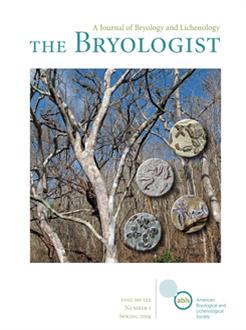There is an increasing use of bioclimatic models to quantify the climate change response of bryophytes and lichens. The physiological performance of these poikilohydric organisms depends on ambient climatic conditions interacting with light availability. However, bioclimatic models have tended to follow a common practice of selecting temperature/precipitation variables without reference to light as a key functional constraint. In this study a growth chamber simulation was used to reconstruct patterns of temperature-moisture-light for the baseline and 2080s climates, affecting the performance of the lichen Flavoparmelia caperata for a high-latitude (56°N) temperate rainforest study site in Britain. The results demonstrate the importance of increased 2080s warmth and moisture under low winter light (possibly favoring respiration), and increased dormancy during drier and warmer summers (possibly reducing photosynthesis), resulting in negative growth (mass loss) for future climates. This is in direct contrast to the outcome of bioclimatic models applied to the same study site, which project increased environmental suitability based on a warmer and wetter climate (not considering irradiance). The study cautions that predictors for bioclimatic models should be chosen to reflect verified constraints in ecological performance (such as for growth), and especially for poikilohydric organisms this would include the interaction between ambient climate and light availability.
How to translate text using browser tools
1 March 2019
Interactions of climate and solar irradiance can reverse the bioclimatic response of poikilohydric species: An experimental test for Flavoparmelia caperata
Christopher J. Ellis
ACCESS THE FULL ARTICLE

The Bryologist
Vol. 122 • No. 1
January 2019
Vol. 122 • No. 1
January 2019
Climate change simulation
epiphyte
lichen
non-analogue climates
photosynthetic photon flux density (PPFD)




